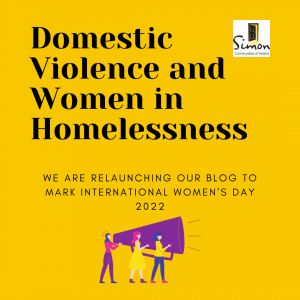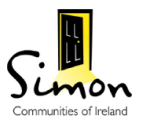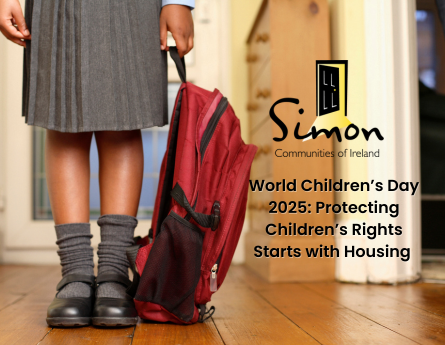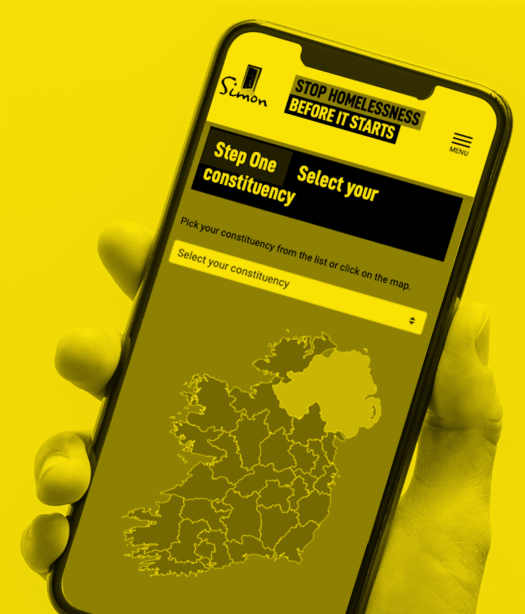Author: Anna Marie Bourke

International Women’s Day is a time to celebrate women, their achievements, and valuable contributions to society. It is also a time to acknowledge the struggles and inequalities that women face on a day to day basis.
To mark International Women’s Day 2022, the Simon Community is relaunching our Blog, with the first post dedicated to women’s unique and difficult experience of homelessness.
In this blog, we will discuss:
- an overview of women’s experience of homelessness
- the link between homelessness and domestic, gender, and sexual based violence (DGSBV)
- ways we can better support women in homelessness
- how you can stay in touch with the Simon Community
Women in Homelessness
Last week we sparked an interesting discussion in our #SimonTalks with Dr Sarah Sheridan and Professor Nicholas Pleace on women’s experience of homelessness; an overlooked homeless population. Conversations, policies, and supports surrounding homelessness traditionally focus on the experience of single men and families. Women experiencing – or at risk of – homelessness are often assumed to be part of a family unit where support is prioritised due to the vulnerability of children. Women are more likely to be the head of homeless families and to be lone-parents, but women experiences of homelessness are broader than their familial relationships. This has to be understood and acted upon if homelessness is to be addressed. Targeted policies, practices, and homeless prevention strategies need to be specifically designed in order to successfully support women. Without this, the experience of women in homelessness will continue to fall through the cracks.
We need to re-evaluate how we understand and measure homelessness. The most recent figures from the Department of Housing show that 2,264 women are living emergency homeless accommodation, representing a third (34%) of all adults (the remaining 66% are men)[1]. These stats, however, only include a limited experience of homelessness, specifically people living in emergency accommodation funded under Section 10 of the Housing (Miscellaneous Provisions) Act 2009. Research shows that women avoid emergency shelters and are more likely to rely on informal arrangements such as temporarily staying with friends and family or couch surfing which can make their homelessness less likely to be visible[2].
The link between homelessness and domestic, gender, and sexual based violence (DGSBV)
The link between homelessness for women and abuse or violence is well established. Research shows that domestic, gender, and sexual based violence (DGSBV) is a factor that leads to homelessness for many women, while being in homelessness can lead to additional instances of abuse[3]. Unfortunately, official studies are lacking. A 2012[4] study of 60 homeless women in Dublin, Galway and Cork showed the deep connection of gender-based violence and homelessness:
- 72% of the women had experienced violence and/or abuse during childhood
- 67% had experienced intimate partner violence in adulthood
- 92% of the women had experienced some form of violence or abuse during their lifetimes
Despite the strong association between homelessness and DGSBV, women fleeing violence are not counted in official homeless stats; even those staying in domestic abuse refuges. This is concerning considering the high volume of women and children in need of refuge. Reflecting on the pandemic, SafeIreland[5] reported that:
‘On average, 180 women and 275 children looked for emergency accommodation every month between March and December 2020. But in that same time, 2,159 requests for refuge could not be met by services which nonetheless worked creatively to find alternative accommodation in the community’
Domestic violence is not treated as a housing issue; yet a lack of secure housing options and a fear of homelessness can force a woman to live in an unsafe home for a prolonged period of time.
DGSBV needs to be evaluated through a housing lens. Women experiencing domestic abuse should not have to choose between their safety and homelessness. If the State were to enact the FEANTSA European Typology of Homelessness and Housing Exclusion (ETHOS)[6] definition of homelessness, women experiencing domestic abuse could have their housing need supported at a much earlier stage. The ETHOS definition has a wider understanding of homelessness that is more inclusive of women’s hidden homelessness. Homelessness under this definition includes:
- Houseless (with a place to sleep but temporary in institutions or shelters not including emergency accommodation)
- living in insecure housing (threatened with severe exclusion due to insecure tenancies, eviction, domestic violence)
- living in inadequate housing (in caravans on illegal campsites, in unfit housing, in extreme overcrowding).
How can we better support women in homelessness who have experienced DSGBV?
1. Expand our understanding of homelessness
Homeless data collection needs to align with the ETHOS definition of homelessness. Using this method can help us uncover the true extent of homelessness among women, including those experiencing DSGBV. Targeted support and prevention can be developed using this information to keep our women safe and in secure housing.
2. Provide long-term housing support
Homelessness and insecure housing should not be an added burden to women who have already endured the trauma of violence and abuse. We need to ensure a guaranteed social and affordable housing stock for women affected by DSGBV. Securing a suitable stock of housing will need coordination and input from a wide range of stakeholders including the Department of Housing, the Department of Justice, Local Authorities, domestic abuse refuges and support organisations, AHBs, NGOs working in the area of homelessness, and many more. Long-term, supported housing is key.
3. Increase our refuge spaces
There is a chronic shortage of refuge spaces for women experiencing DSGBV. Ireland ratified the convention on International Women’s Day 2019, but still only provides a third of the minimum committed to. While there has been commitment from the Department of Justice[7] to reduce this deficit, we are still well short of the 500 or more spaces as committed to under the Istanbul Convention. A suitable supply of emergency accommodation is critical to ensure women living in unsafe conditions have a place to get immediate accommodation support while long-term housing is being arranged.
Let’s stay in touch
If you would like to stay in touch, you can subscribe to our mailing list at the bottom of this webpage
You can re-watch our #SimonTalks discussion on women’s experience of homelessness with Dr Sarah Sheridan and Professor Nicholas Pleace here:
[1] https://www.gov.ie/en/publication/c20c9-homeless-report-january-2022/
[2] https://www.feantsa.org/en/report/2021/04/01/womens-homelessness-european-evidence-review?bcParent=27
[3] https://eprints.whiterose.ac.uk/172737/1/FEANTSA_Women_s_Review.pdf
[4] https://www.drugsandalcohol.ie/17047/1/research_paper_one_women_and_homelessness_in_ireland.pdf
[5] https://www.safeireland.ie/policy-publications/#dflip-df_8722/1/
[6] https://www.feantsa.org/en/toolkit/2005/04/01/ethos-typology-on-homelessness-and-housing-exclusion
[7] https://www.rte.ie/news/politics/2022/0215/1280846-lobbying-regulation/


